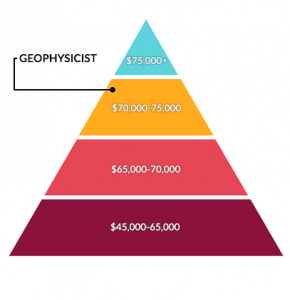All Categories
Featured
Table of Contents
Marine Geophysicist in Cooloongu Western Australia 2021

The main design for the radial structure of the interior of the Earth is the preliminary reference Earth model (PREM). Some parts of this design have been upgraded by recent findings in mineral physics (see post-perovskite) and supplemented by seismic tomography. The mantle is primarily made up of silicates, and the limits in between layers of the mantle follow stage shifts.

This makes plate tectonics possible. Schematic of Earth's magnetosphere. The solar wind Circulations from left to. If a world's electromagnetic field is strong enough, its interaction with the solar wind forms a magnetosphere. Early area probes drawn up the gross dimensions of the Earth's electromagnetic field, which extends about 10 Earth radii towards the Sun.
Inside the magnetosphere, there are relatively thick areas of solar wind particles called the Van Allen radiation belts. Geophysical measurements are usually at a particular time and location. Accurate measurements of position, in addition to earth contortion and gravity, are the province of geodesy. While geodesy and geophysics are separate fields, the 2 are so carefully connected that lots of scientific organizations such as the American Geophysical Union, the Canadian Geophysical Union and the International Union of Geodesy and Geophysics encompass both.
What Is Geophysics? in Riverton Aus 2020
, integrates huge collaborates and the regional gravity vector to get geodetic collaborates. This method only provides the position in 2 coordinates and is more difficult to use than GPS.
Gravity measurements became part of geodesy due to the fact that they were required to related measurements at the surface area of the Earth to the recommendation coordinate system.
, which are studied through geophysics and space physics.
Geophysical Services in Gosnells Western Australia 2021

Given that geophysics is worried with the shape of the Earth, and by extension the mapping of functions around and in the world, geophysical measurements include high accuracy GPS measurements. These measurements are processed to increase their precision through differential GPS processing. Once the geophysical measurements have actually been processed and inverted, the translated results are outlined utilizing GIS.
Many geophysics companies have developed in-house geophysics programs that pre-date Arc, GIS and Geo, Soft in order to fulfill the visualization requirements of a geophysical dataset. Expedition geophysics is applied geophysics that typically utilizes remote picking up platforms such as; satellites, aircraft, ships, boats, rovers, drones, borehole noticing devices, and seismic receivers.
For instance, aeromagnetic information (airplane collected magnetic information) collected utilizing traditional fixed-wing aircraft platforms must be remedied for electro-magnetic eddy currents that are produced as the aircraft moves through Earth's electromagnetic field. There are also corrections associated with changes in measured possible field intensity as the Earth turns, as the Earth orbits the Sun, and as the moon orbits the Earth.
Geophysical Methods Commonly Employed For Geotechnical ... in Singleton Oz 2020
Signal processing involves the correction of time-series information for unwanted noise or mistakes introduced by the measurement platform, such as aircraft vibrations in gravity information. It also includes the reduction of sources of noise, such as diurnal corrections in magnetic information., meteorology, and physics.
The magnetic compass existed in China back as far as the 4th century BC. It was utilized as much for feng shui as for navigation on land. It was not till excellent steel needles might be forged that compasses were used for navigation at sea; before that, they might not maintain their magnetism long enough to be beneficial.
By looking at which of eight toads had the ball, one could figure out the direction of the earthquake.'s (1600 ), a report of a series of meticulous experiments in magnetism.
What Is The Difference Between Geophysical Method And ... in Mullaloo WA 2020
In 1687 Isaac Newton released his, which not just laid the foundations for classical mechanics and gravitation Also described a variety of geophysical phenomena such as the tides and the precession of the equinox. The first seismometer, an instrument efficient in keeping a continuous record of seismic activity, was built by James Forbes in 1844. Geochemistry, Geophysics, Geosystems. National Aeronautics and Space Administration. Retrieved 13 November 2018.
Runcorn, S.K, (editor-in-chief), 1967, International dictionary of geophysics:. Pergamon, Oxford, 2 volumes, 1,728 pp., 730 fig Geophysics, 1970, Encyclopaedia Britannica, Vol. Intro to seismology (Second ed.).
Latest Posts
Geophysical Survey Definition in Bayswater Oz 2023
Geophysical Surveys: Definition & Methods in Ardross Australia 2020
What Is Geophysics And What Do Geophysicists Do? in Maddington WA 2023